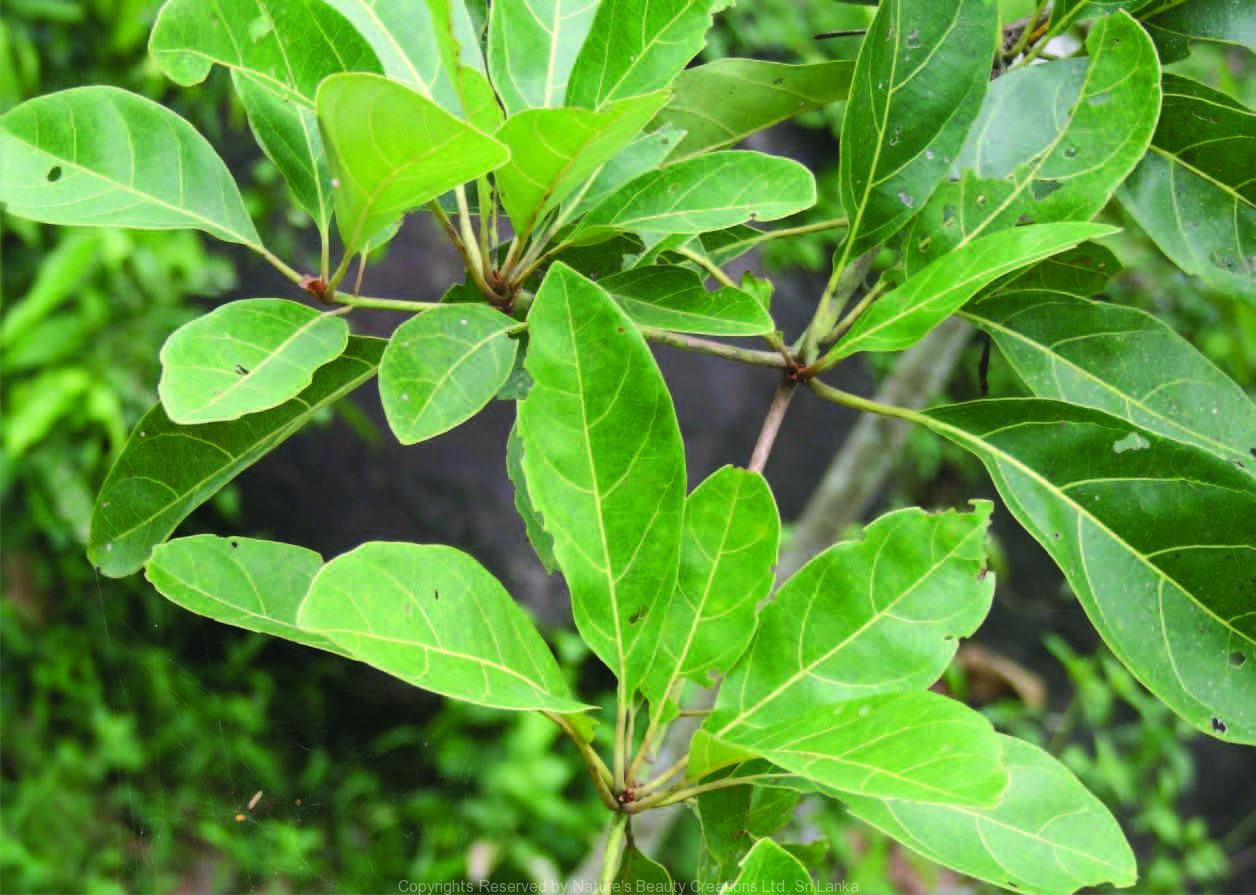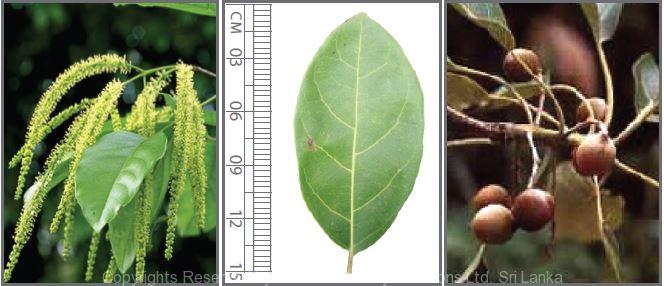

Traditional Knowledge
Useful plant parts :
Fruit rind and bark
Uses in traditional medicine :
- Fruit rind mixed with other ingredients is taken for constipation
- Decoction of the bark is a diuretic
- Powder of the dried fruit rind is taken to improve vision
Scientific Research
Chemical constituents:
Terpenes: belleric acid, bellericoside, arjungenin and its glucoside from plant; lignans: anolignan B, termilignan, thannilignan and gallic acid from fruit rind; fatty acids: palmitic, oleic, linoleic acids from kernel oil
Bioactivity :
Lignans and anolignan B: anti-HIV-1, antimalarial, antifungal; alcohol and aqueous extracts of fruit: wound healing, α-amylase and α-glucosidase inhibitor, antidepressant, anticholinergic and Ca2+ antagonist properties, therefore, useful in treating colic, diarrhoea, asthma and useful in preventing metabolic syndrome; kernel oil: edible and rich in linoleic acid; aqueous extract of plant: stimulate insulin secretion and activity, inhibits protein glycation and starch digestion
Clinical:
Ingredient of the drug ‘Triphala’ which is used to treat many malaises, such as gastric motility, heart ailments and hepatic diseases
References : Choudhary, G. P., (2008), Wound healing activity of the ethanol extract of Terminalia bellirica Roxb. Fruits, Formerly Natural Product Radiance, 7(1), 19-21. Dhingra, D. and Valecha, R., (2007), Evaluation of antidepressant-like activity of aqueous and ethanolic extracts of Terminalia bellirica Roxb. fruits in mice, Indian J Exp Biol, 45(7), 610-6. Gilani, A. H. et al., (2008), Mechanisms underlying the antispasmodic and bronchodilatory properties of Terminalia bellerica fruit, Journal of Ethnopharmacology, 116(3), 528–538. Kasabri, V. et al., (2010), Terminalia bellirica stimulates the secretion and action of insulin and inhibits starch digestion and protein glycation in vitro, Br J Nutr, 03(2), 212-7. Kaur, S. et al., (2002), The in vitro antimutagenic activity of Triphala — an Indian herbal drug, Food and Chemical Toxicology, 40(4), 527–534. Makihara, H. et al., (2012), Preventive effect of Terminalia bellirica on obesity and metabolic disorders in spontaneously obese type 2 diabetic model mice, J Nat Med, 66(3), 459-67. Nampoothiri, S. V. et al., (2011), In vitro antioxidant and inhibitory potential of Terminalia bellericaand Emblica officinalis fruits against LDL oxidation and key enzymes linked to type 2 diabetes, Food and Chemical Toxicology, 49(1), 125–131. Nandy, A. K. et al., (1989), Triterpenoids and their glucosides from Terminalia bellerica, Phytochemistry, 128(10), 2769–2772. Rukmini, C. and Rao, P. U., (1986), Chemical and nutritional studies on Terminalia bellirica Roxb. Kernel and its oil, Journal of the American Oil Chemists’ Society, 63(3), 360-363. Valsaraj, R. et al., (1997), New Anti-HIV-1, Antimalarial, and Antifungal Compounds from Terminalia bellerica, Journal of Natural Products, 60 (7), 739–742.
Copyrights Reserved By
Natures Beauty Creations




